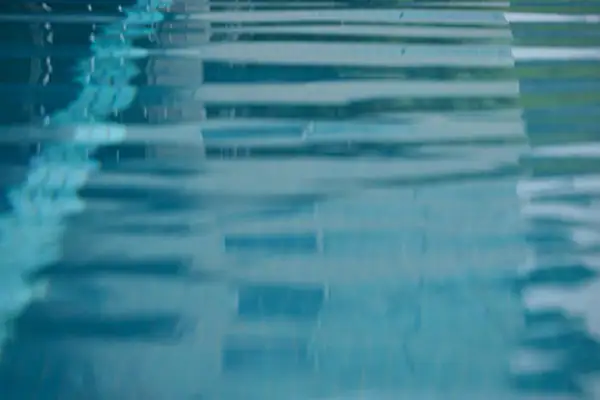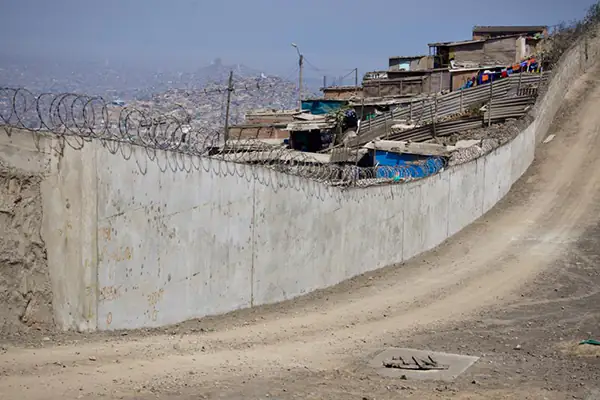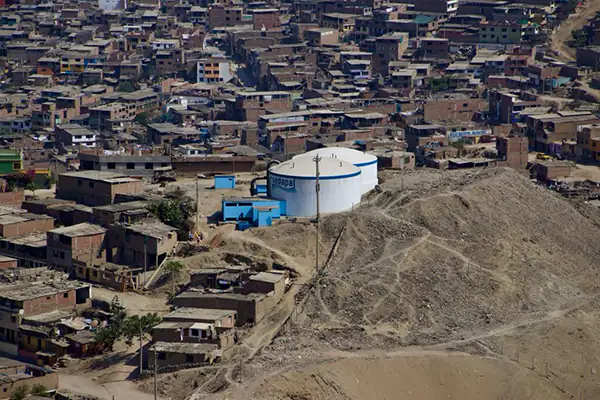The history and population growth of San Juan de Miraflores has been developing over time and gradually due to the great migration that occurred from the interior of the country. The Ciudad de Dios sector includes the areas of Pamplona Baja, El Arenal and San Juanito. And, the Pamplona Alta area is comprised of all the sectors whose limits go from Av. Defensores de Lima upwards, towards the limits with the adjoining hills that make up the Pampas de San Juan.
One of these hills is called the Cerro San Francisco. On one side it has a sector of Pamplona Alta called Fronteras Unidas, and on the other, there is the Las Casuarinas Urbanisation. Casuarinas is a sector of the San Francisco hill like other adjoining ones such as Casuarinas Sur and Los Alamos. It is the same hill, but it has two intrinsically opposite faces to the East and West.
I have lived in Las Casuarinas since my childhood and I have been able to closely feel the development of both sides. I have always walked a lot on the hill, which when I was little was just sand. I liked to climb and slide down a slide, fly the kite in the high places where there was a lot of wind, and look from above at the sea in the distance. The memory of freedom to be in contact with nature without fear and restrictions, I have engraved in my sensory memory.
Over time and with a lot of effort, trees were planted, tracks were laid out, lines were laid for water, electricity and other communications services. Finding water in the subsoil at the base of Cerro San Francisco was what first allowed the construction of wells to bring water to the highest parts of the hill and urbanize it. This was the great work of Daniel and Gisela Carter. He, an engineer of North American origin, who came from the city of San Francisco, California, who upon encountering a hill in Lima that bore the name of his hometown, was prompted to dream of the urban development of that precise place. And she, an architect of German origin, who supported him throughout the company, captured the undulating trajectory of the streets and the resulting land in the plans, always respectful of the natural beauty of the geography of the place. The development of Casuarinas took place in a slow and orderly manner in three distinct stages. The lower part, the intermediate part and now the last part, the upper part, which was delimited two years ago by a long wall to prevent the invasions of Pamplona from ´´spilling´´ over the property.

I was always very attracted to climb to the top and look at Lima from above and also see the extensive, undulating pampas on the other side. The urban development of the Pueblos Jovenes to the East was barely perceptible from a distance. It is only in the last few years that the demographic explosion has given a huge boost to both the construction of houses in the second and third stages of Las Casuarinas and to the growth of human settlements in Pamplona Alta. In Casuarinas, development continues to respond to the orderly and visionary planning proposed by Messrs. Carter nearly 60 years ago with the corresponding construction parameters. In Pamplona Alta, on the other hand, the installation of countless houses is the result of invasions and irregular purchase and sale of land,
´´The ethnographer «inscribes» social discourses, puts them in writing, writes them down. In doing so, he departs from the transient fact that exists only at the moment it occurs and moves on to a relationship of that fact that exists in his inscriptions and can be consulted again. (…) The function of (ethnographic) theory is to provide a vocabulary in which what symbolic action – or human behavior – has to say about itself and hence about its role in culture can be expressed (…) The goal it is to arrive at great conclusions starting from small but very dense facts, to lend support to general statements about the role of culture in the construction of collective life by relating them exactly to specific and complex facts.´´1
This quote from the text of ´´Thick Description´´ by Clifford Geerz, and so many other ideas that I picked up from that and other readings on the subject, were what prompted me to look again and more carefully at what I had around me, to observe the place where I live with another scale of measurements. Starting from this analysis, from this walk ´´with open eyes´´ on my round trip on both sides of Cerro San Francisco, these photographs have resulted that seek to highlight the different layers of meaning that are interwoven in them. The inevitable subjectivity with which what is perceived is chosen, captured and shaped in a plastic way, results in a montage of concepts, of history made into an image, which I hope will remain to be analyzed and interpreted beyond my own time and space.
The very particular color of our Lima stands out, whose sky in the form of a “donkey’s belly”, generally misty and gray throughout the year, transmits a powerful nostalgia. Also the varied geological layers and ocher tones, the gravel and the rocks of the hills that come down from the Cordillera and are part of our arid coastal landscape, are revealed as characteristics of the San Francisco hill. We have the Ocean in front of the hill, on the West, but in Lima access to water is difficult and therefore it is scarce and expensive. There is a lot of humidity, but it rains little and therefore the land is dry, dusty and hard.
But beyond that first formal reading, the unsettling begins to emerge when the contrast between one side of the hill and the other is detected: Casuarinas and Pamplona Alta, separated by a concrete wall and barbed serpentine. This frontal clash between construction and land, property and invasion, wealth and poverty, and the way in which we protect ourselves from the fear of the other, from the unknown or what we prefer not to see – fencing, structuring and walling, is the reading to the that invite these images. It is an abysmal contrast that exists on one side of the hill and on the other. It reflects in scale and taken to the extreme the two sides of the coin of our entire Lima society.
“Descartes viewed vision as an extension of touch (…) and compared the gaze to the cane used by the blind to grope in real space.” 2
It is a very effective way of describing how it is that through our vision we see beyond the material that surrounds us and we can access those elusive feelings and thoughts of our being. There are sensations for which there are no words, memories that are not fully understood from which corner of our psyche they come or how they materialize in our mind.
However, memory is the essence of history and therefore there is no way to separate the subjectivity of memories, from the “objectivity” of the facts.
Didi-Huberman in his text ´´How to open our eyes´´, cites Foucault to reaffirm that history is not a neutral act: we apprehend it from the personal experiences that define us within our socio-temporal sphere. Our own history always serves as a filter to sift what we inherit. All that we capture and then project onto our history are idealized constructions. We are just a conduit of memories in the time machine, which is life. The exact past does not exist. It depends on individual and collective memory and on a montage of this compilation of memories that are not precisely historical, nor particularly chronological. They are the result of a ´´decantation´´ of the past through our memory. ´´There where the domain of the verifiable stops, we are before a time that is not the time of dates. But that time that is not exactly the past has a name: it is memory. It is she who humanizes and configures time, intertwines its fibers, consecrating an essential impurity to it”. 3
The images that we capture with the camera will go through time in a completely anachronistic way, interweaving emotions and concrete facts. They will remain as a trace of the experiences that forged us. But in turn, they will have the ability to evoke in the other, in our interlocutors, in those who are interested in looking at and unraveling the keys superimposed on the density of the warp of images, reminiscences relative to the nebula of their own memory.

“Before an image we have to humbly recognize the following: that it will probably outlive us, that before it we are the fragile element, the passing element, and that before us it is the element of the future, the element of duration. The image often has more of a memory and more of a future than the being that looks at it”. 4
1 Clifford Geerz, ´´Etnografía – Descripción densa´´
2 WJT Mitchell, ´´Mostrando el ver´´
3 y 4 Didi-Huberman, ´´Ante la imagen: Ante el tiempo´´
